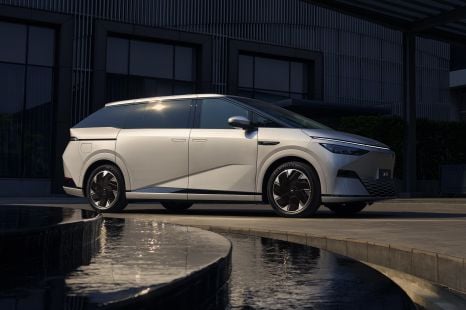

William Stopford
Will 2026 be the year of the people mover in Australia? China seems to think so
4 Hours Ago
Are the kids sick of being late to school? The X5 M and X6 M Competition might just be the solution. They're blindingly fast and surprisingly nimble.
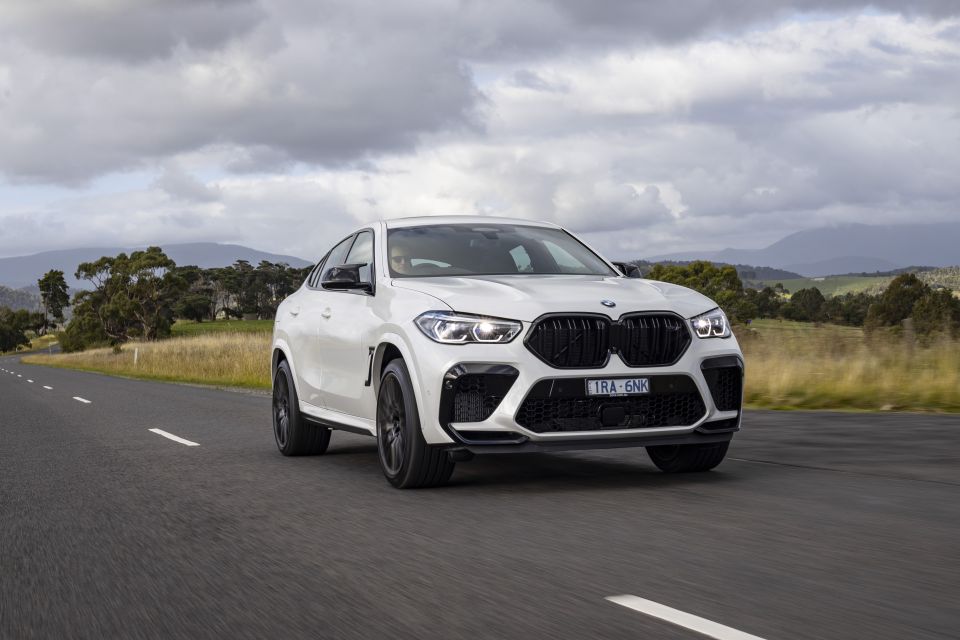
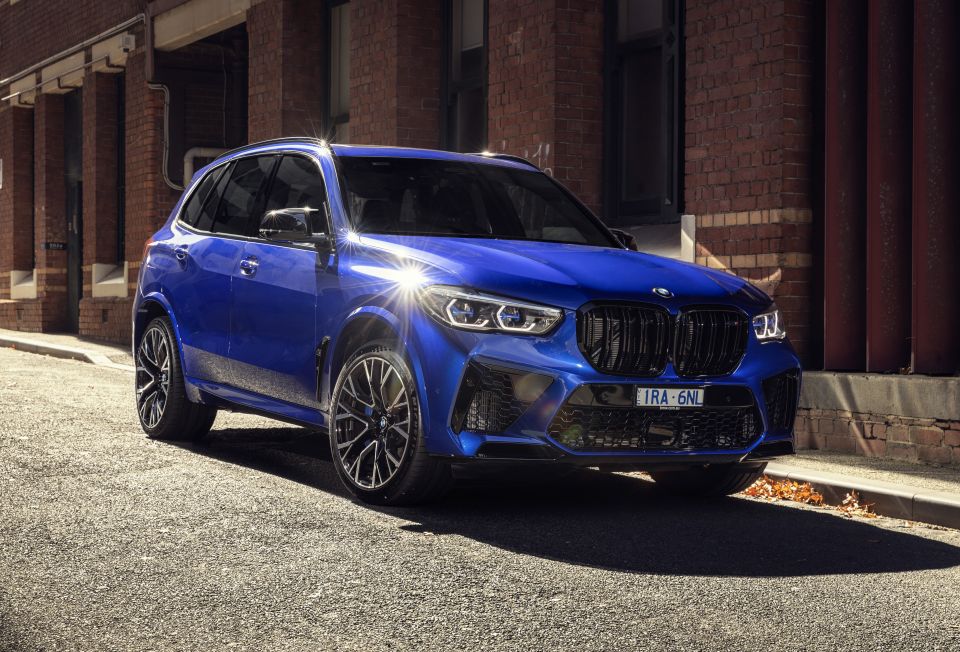

Contributor
New from
$209,900
excl. on-roads

Contributor
New from
$209,900
excl. on-roads


Contributor
New from
$209,900
excl. on-roads

Contributor
New from
$209,900
excl. on-roads
Where expert car reviews meet expert car buying – CarExpert gives you trusted advice, personalised service and real savings on your next new car.
BMW M might technically stand for ‘motorsport’, but it really could just mean ‘more’ at the moment.
The performance arm is building more cars than ever before, with more power and, in most cases, more driven axles than we’ve seen before.
The latest bombs in the BMW M model blitz are the BMW X5 M and X6 M Competition, complete with power from a twin-turbo V8 engine and angrier, more unique looks than the models they replace.
Both will hit 100km/h in less than four seconds, and set you back north of $200,000 before on-road costs.
If you can put aside any misgivings you might have towards high-performance SUVs, they’re also mighty impressive.

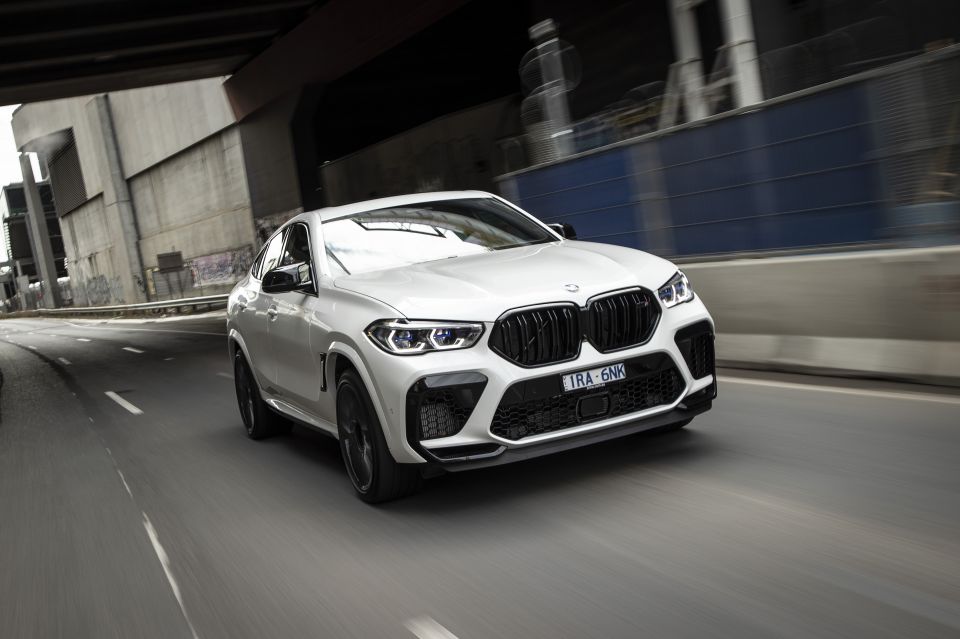
There are two different versions of the X5 M and X6 M offered globally, but Australia only gets the full-fat Competition versions.
Pricing for the X5 M Competition kicks off at $209,900 before on-road costs, making it $58,000 more expensive than the previous range-topper, the petrol X5 M50i.
It’s also close to $70,000 more than a Jaguar F-Pace SVR, although BMW would (correctly) argue the X5 M Competition is a far more serious performance car than the shouty, supercharged Jaguar.
Moving to the X6 M Competition bumps the price by $4000, to $213,900 before on-roads.
At this price point that’s a negligible difference, so it’s really a case of picking which body style you prefer.


At this end of the range it’s more a question of what you don’t get.
Externally, both cars ride on 21-inch front and 22-inch rear wheels. They’re wrapped in Michelin Pilot Sport 4S tyres measuring 295/35 front and 315/30 rear, and there are 395mm front and 380mm rear brakes to pull things into line.
Because we only get the range-topping Competition, the grille and exterior detailing is finished in gloss black as standard. The front bumper is more aggressive than the standard car, while the rear is home to a diffuser-style insert with four chunky exhaust pipes.
Add in the requisite sprinkling of M badges and you’ve got a pair of seriously angry SUVs. Style is subjective, but we’d argue BMW has done a good job cranking up the aggression without making the X5 gauche.
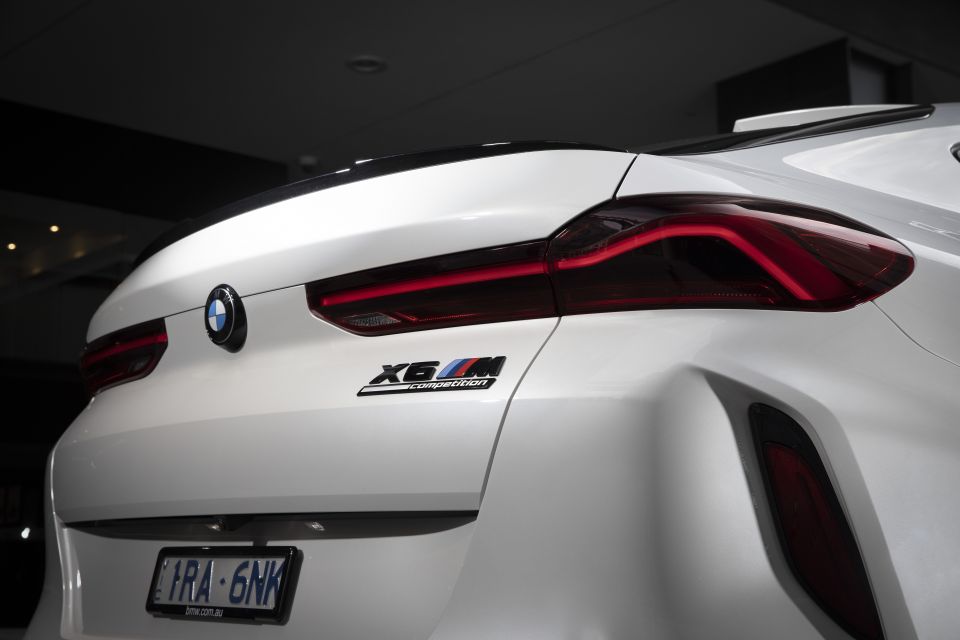
Inside, there are heavily bolstered seats trimmed in Merino leather. They’re heated up front, and can be had in colour combinations ranging from black-on-black to a black with honeycomb-coloured stripe.
The steering wheel is an M unit with two programmable switches for M1 and M2 modes poking out above its centre. They’re red, like the start button, and look suitably racy.
As with the wider X5 and X6 ranges, the M Competition twins feature the BMW OS7.0 infotainment system and its twin 12.3-inch displays. Along with niceties such as wireless Apple CarPlay and gesture control, the system includes a head-up display, and a bevy of unique graphics.
Keyless entry and start, parking assistant, soft-close doors, a panoramic glass sunroof, heated/cooled cupholders, wireless phone charging, and an Alcantara headliner are also included.
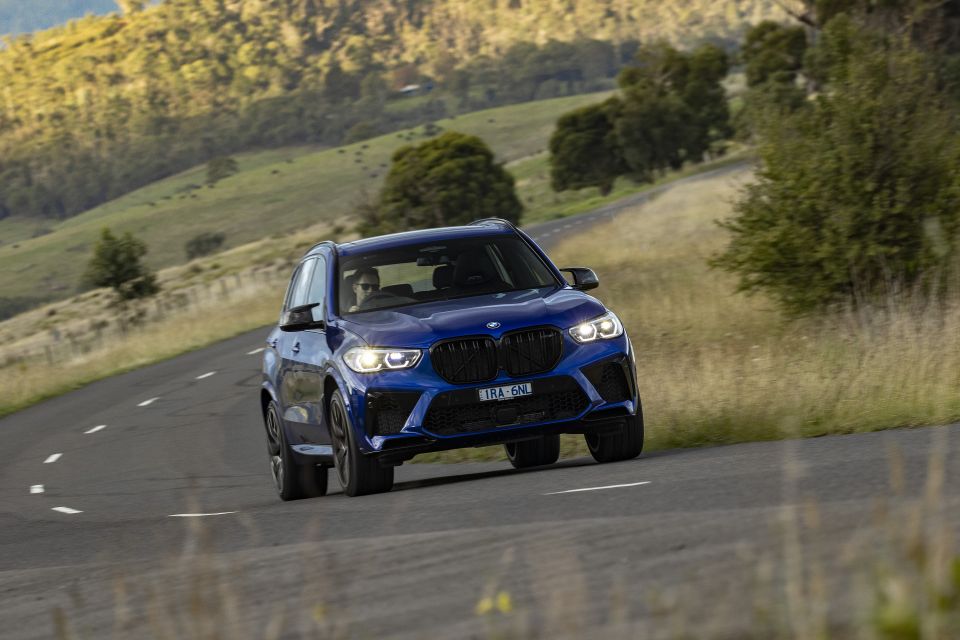
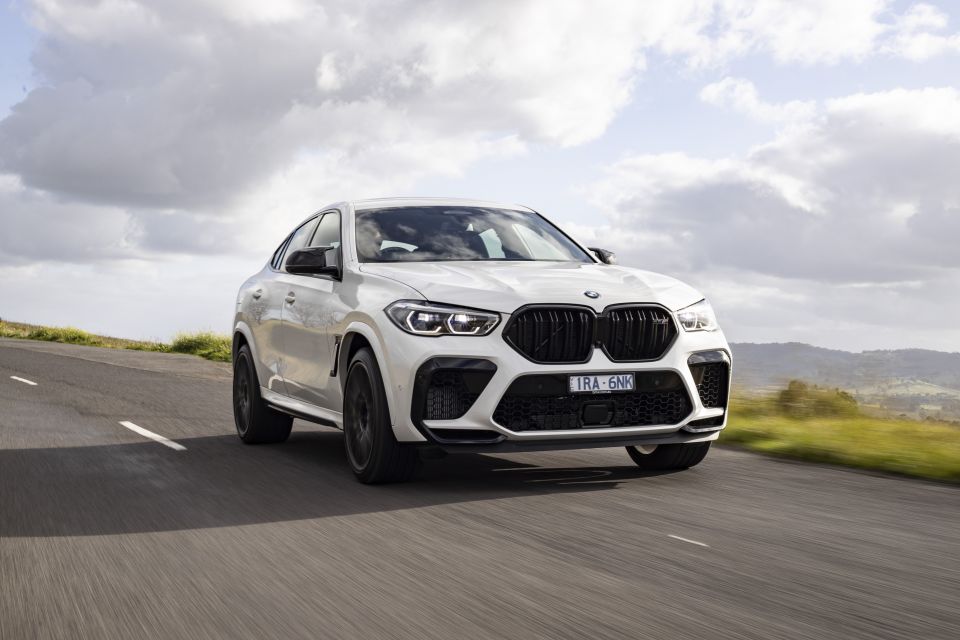
The X5 has been given a five-star rating from ANCAP, although the M Competition models haven’t been tested.
It scored 89 per cent for adult occupant protection, 87 per cent for child occupant protection, 75 per cent for vulnerable road user protection, and 71 per cent for safety assist.
Autonomous emergency braking, lane-keeping assist, lane-departure warning, rear cross-traffic alert, and adaptive cruise control are all standard, along with BMW’s excellent surround-view camera and parking sensors.
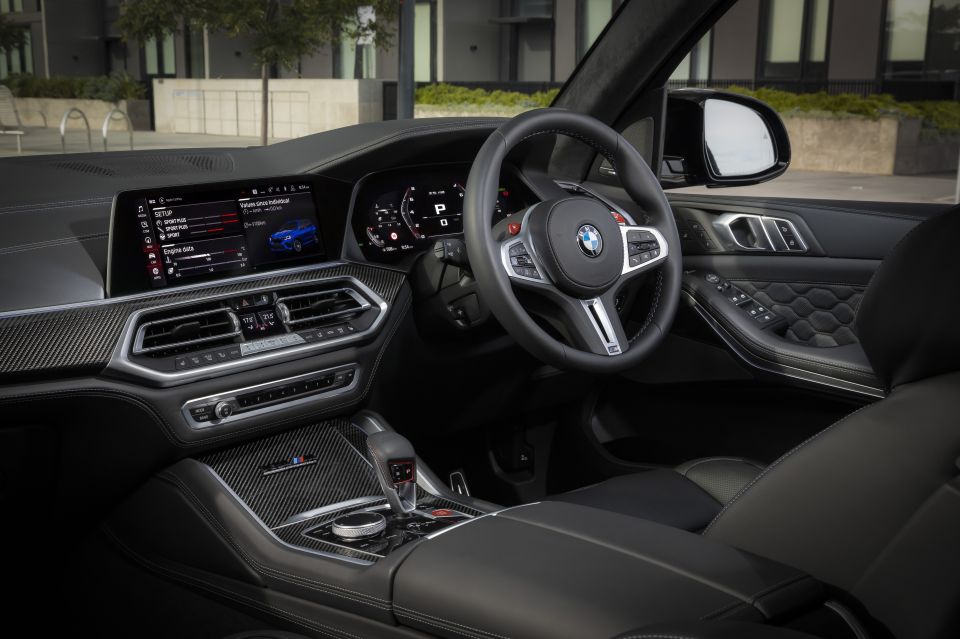
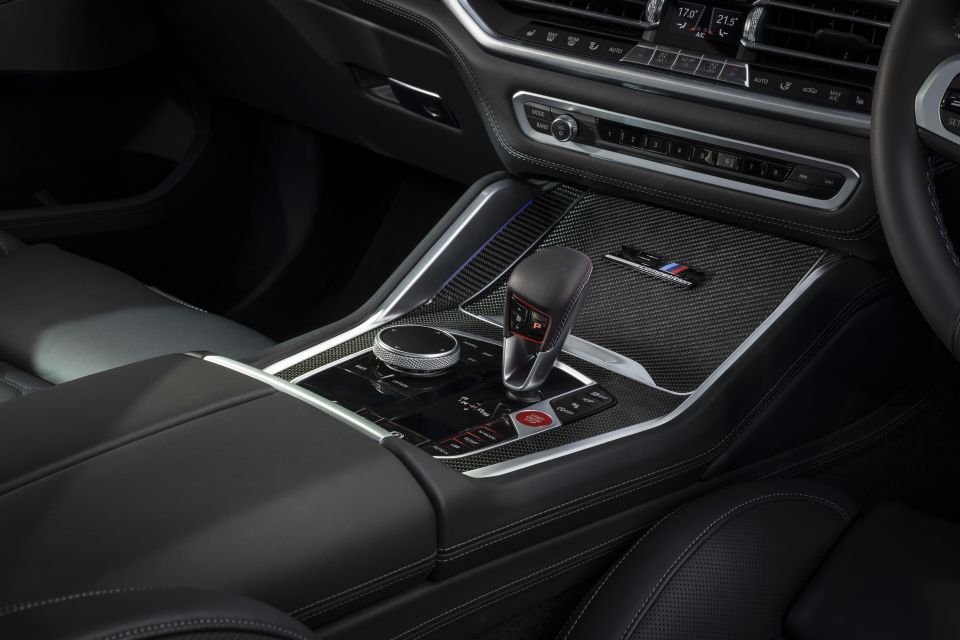
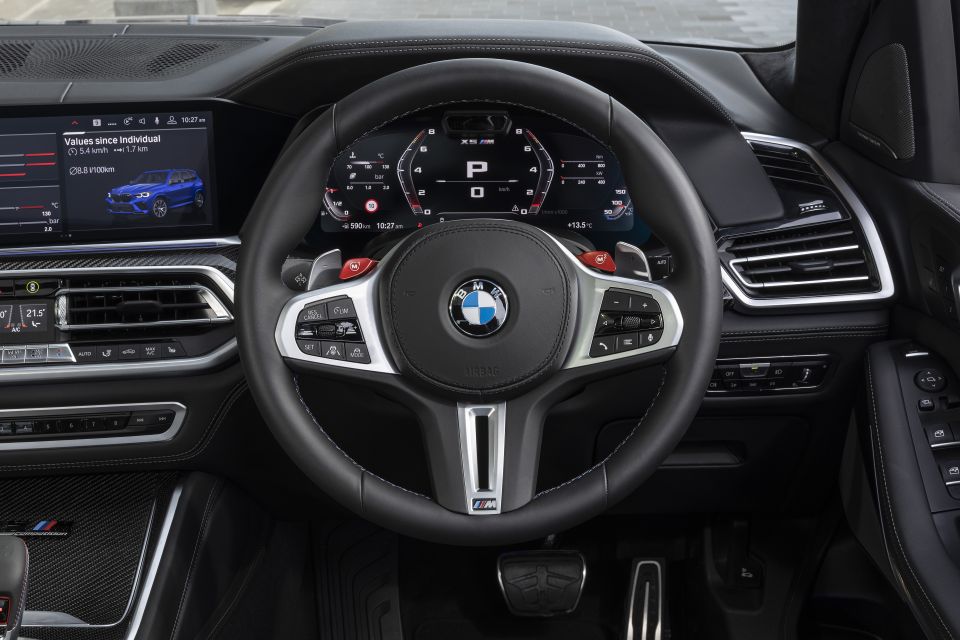
The M Competition twins are every bit as comfortable and spacious as you’d expect. They’re excellent.
The driving position is perfect for a performance SUV, for starters. The driver’s seat has enough bolstering to feel sporty, but also offers excellent under-thigh support for long-legged people.
It drops down surprisingly low without sacrificing the commanding driving position for which SUVs are known, too. We spent four hours behind the wheel with only a few short photography breaks without any aches, pains or numbness, which is impressive.
Everything you touch feels high quality. The seats, dash, and steering wheel are all finished in soft leather, while the leather-stitched gear lever clicks into reverse with a satisfying click.
Although Audi and Mercedes-Benz are both doing good things with infotainment, BMW OS7.0 is my personal pick of the bunch. The central display is crystal clear and can be manipulated using a choice of touch, voice, and rotary controller inputs, all of which are easy to understand.
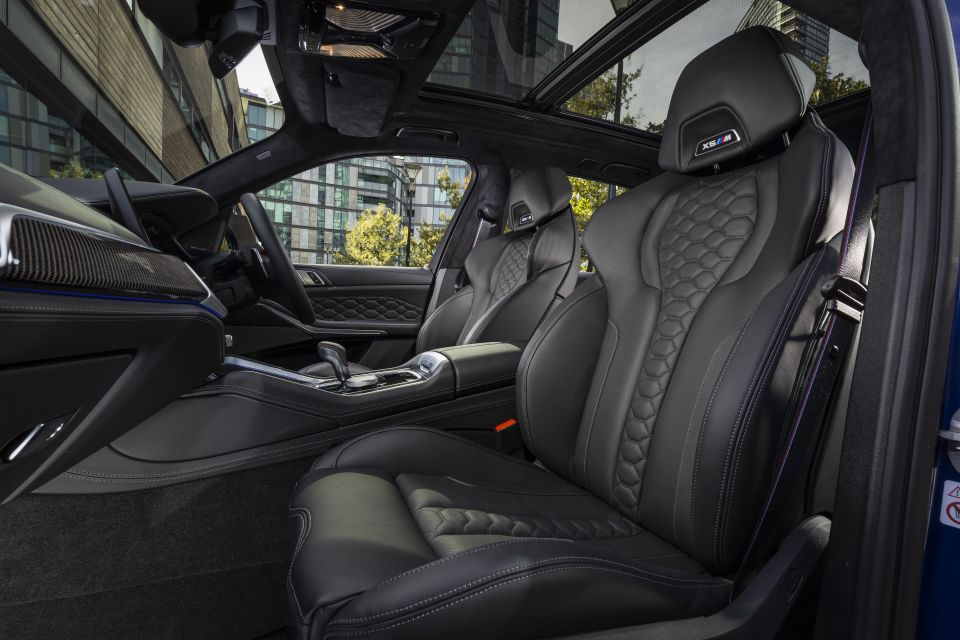
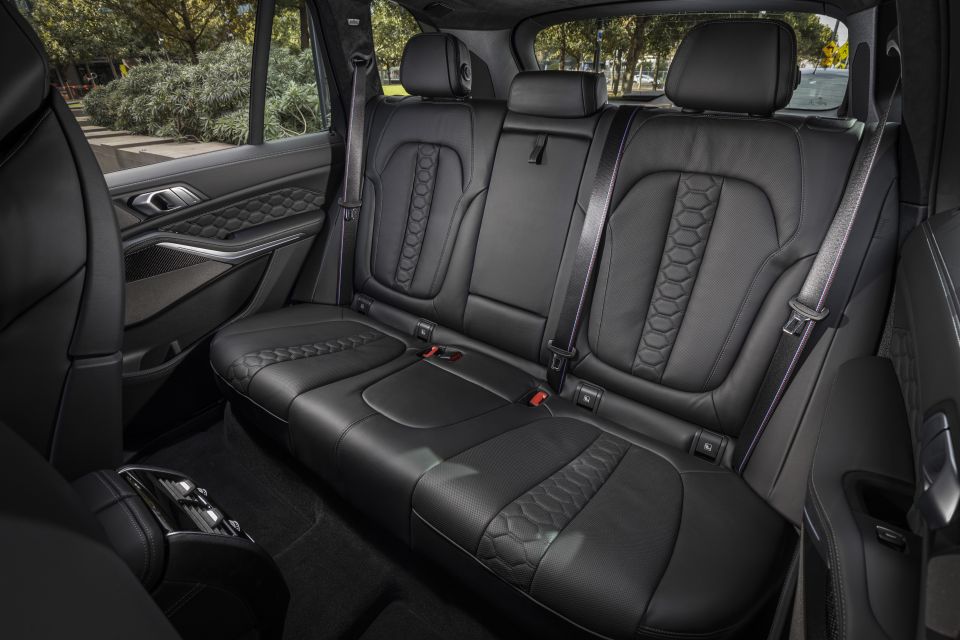
BMW voice control doesn’t quite have the same functionality as MBUX, but it more often than not knows what you’re saying. I’ve survived this long without using my voice to open the sunroof, why would that change in 2020?
The digital instruments leave a bit to be desired in normal mode, with the same backwards rev counter that afflicts the rest of the BMW range, but they’re clear and modern in M mode, with its large central speedo.
As a family SUV, the X5 M Competition ticks the practicality box. Up front there’s a spacious central storage bin, two cupholders, a wireless phone charger, and spacious door bins for bottles and other junk.
Down back it’s a similar story. The X5 is a nicer place to spend time from the second row, with more headroom than the sloping-backed X6, but both have space for long-legged passengers sitting behind long-legged drivers.
With dual-zone rear climate control the kids won’t fight over the temperature, and there’s USB-C charging back there as well.
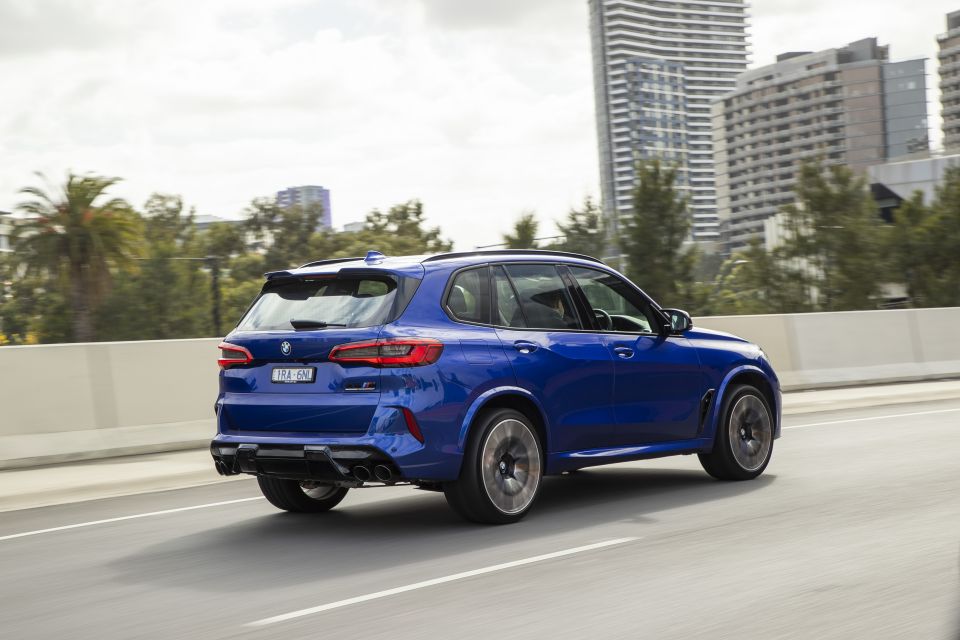
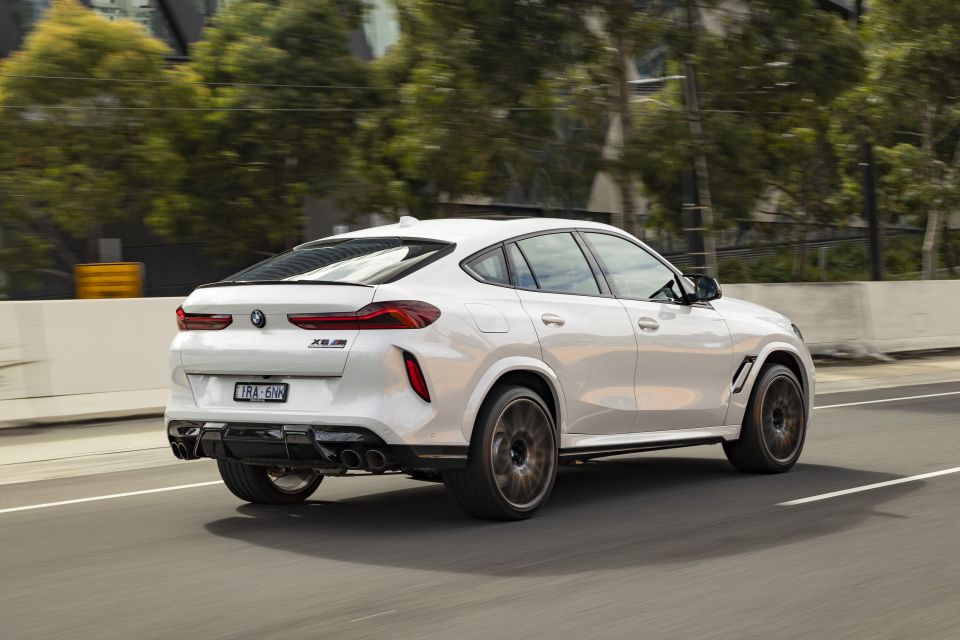
Boot space in the X5 is 650L with the rear seats in place and a whopping 1870L with them folded, while the X6 M is slightly down at 580L and 1530L.
Does it feel $58,000 more special than a regular X5 or X6 cabin? Maybe not. BMW is almost a victim of its own success – making the X5 cabin so lovely in base spec makes it harder to distinguish the range-topping M.
Regardless, it’s a high-quality, high-tech space.
The X5 M Competition packs its trump card under the bonnet.
Power comes from a 4.4-litre twin-turbo V8 engine making a whopping 460kW and 750Nm. It’s put to all four wheels through an eight-speed torque converter and xDrive all-wheel drive system.
Although those numbers are on a par with the M5 sedan, but the SUV version loses the ability to operate as a pure rear-wheel drive car. It can, however, be flicked into a more rear-biased M Sport mode for a bit more action.
Given both these cars weigh 2300kg, the fact they can hit 100km/h from standstill in just 3.8 seconds is remarkable.
Nothing that heavy should move that quickly but hey, it’s 2020 and the world has ground to a halt because of a global pandemic. Anything’s possible.
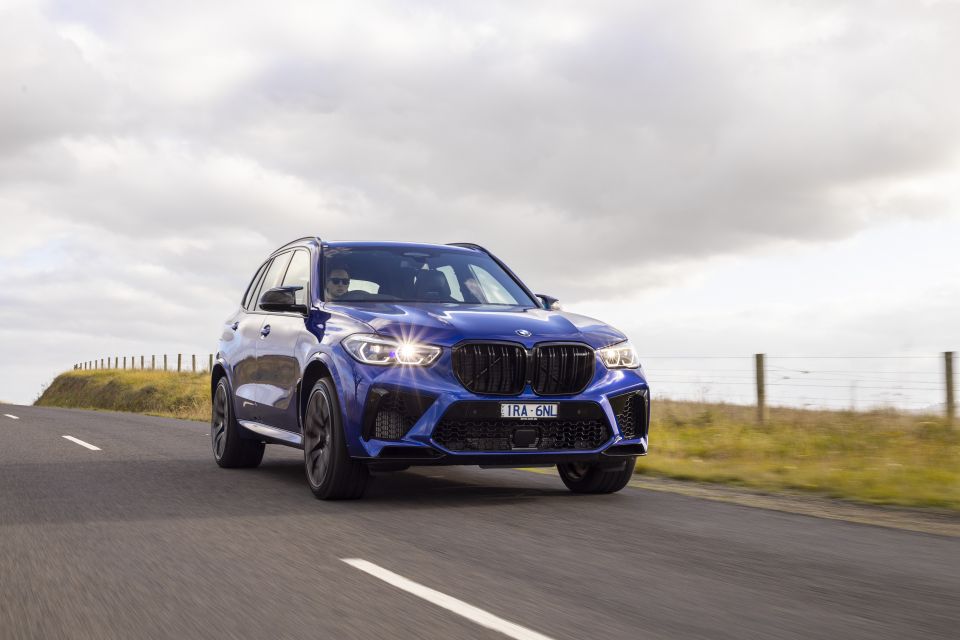
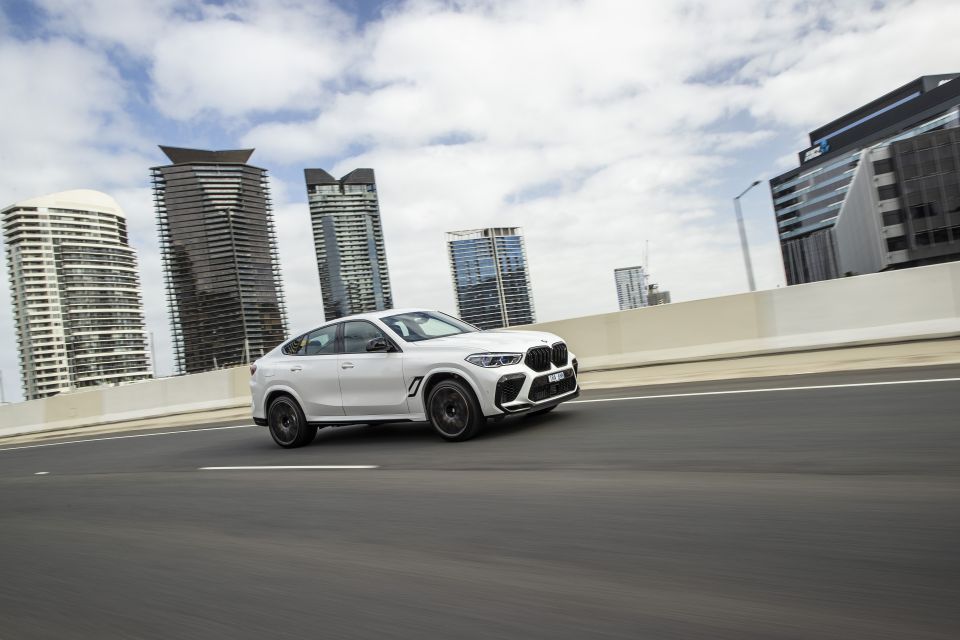
You could be fooled into thinking the X5 M Competition is a regular car on startup. The interiors look and feel mostly normal, the engine fires with a muted snarl, and the throttle isn’t touchy in its initial travel.
Pulling out of the BMW Australia carpark, for example, you could be forgiven for wondering what all the fuss is about.
And then, if you’re anything like me, you’ll floor the throttle for the first time, have the wind knocked from your chest, and laugh out loud like a child. It’s stupidly, hilariously accelerative.
Central to the experience is the V8 engine. Put simply, it’s a weapon.
Peak torque comes on tap at 1800rpm and sticks around until 5800rpm, which means you get the sort of any gear, any speed acceleration that characterises modern turbo’d performance engines. Need to accelerate uphill from 40km/h in fourth? Certainly sir, we can do that.
It also attacks the redline with shocking vigour. Peak power comes in at 6000rpm, giving these large SUVs a ripping top-end rush, backed by a hard-edged V8 note.
The M Competition twins simply devour the lower gears – and in Australia, enjoying third for more than a few seconds will have you deep into ‘lock you up and throw away the key’ territory.
It sounds good with the exhaust in its louder mode, with a hard-edged, motorsports bark in the cabin, but some more aural theatrics would be nice. Jaguar Land Rover’s supercharged V8 engine makes you grin at low speeds in a way the BMW just doesn’t.
I was nervous about how the cars would ride on their 21/22-inch standard wheels, but there really was no need. In comfort mode it doesn’t feel all that much firmer than a standard X5 M50i, doing an impressive job of ironing out small imperfections.
There’s no hiding the size of the wheels over bigger potholes or sharper bumps, though.

The surprisingly pliant ride couples with the smooth-moving torque converter and relaxed basic throttle tune make the M Competition twins more than comfortable on the school run. There are hints at the potential lurking within, though.
The steering is light in comfort mode, but the revised front suspension and wider tyres make the wheel tug in your hands as it follows cambered roads. The effortless performance on tap when you delve into the throttle travel is a handy reminder you’re driving an M car, too.
Unleashing the beast requires a bit of button pushing. There are three gearshift settings, two brake pedal settings, two levels of suspension stiffness, three engine modes, and three steering weight options.

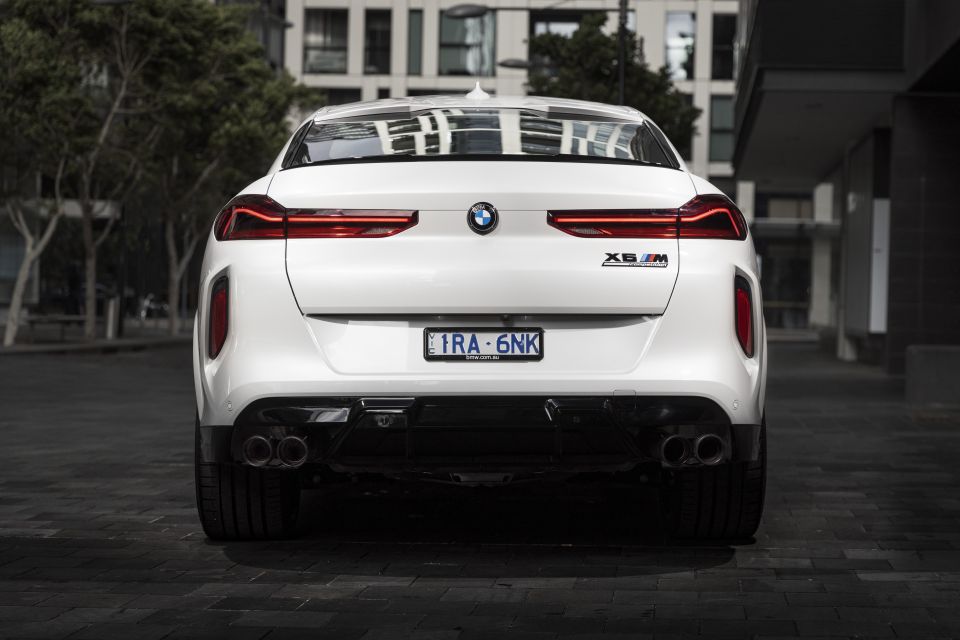
Thankfully, there are two programmable M buttons on the steering wheel. The first in our testers was tuned to offer a sharper throttle but keep the steering, suspension, and brakes in their more relaxed setting, while the second turned everything up to 11 and the ESP into sport.
Locked into its most aggressive mode, the Competition is a weapon, there’s no other word for it.
BMW was brave with the roads it selected for the car’s launch, opting for some of Victoria’s tightest, twistiest tarmac, but the X5 M and X6 M stood up to the punishment remarkably well.
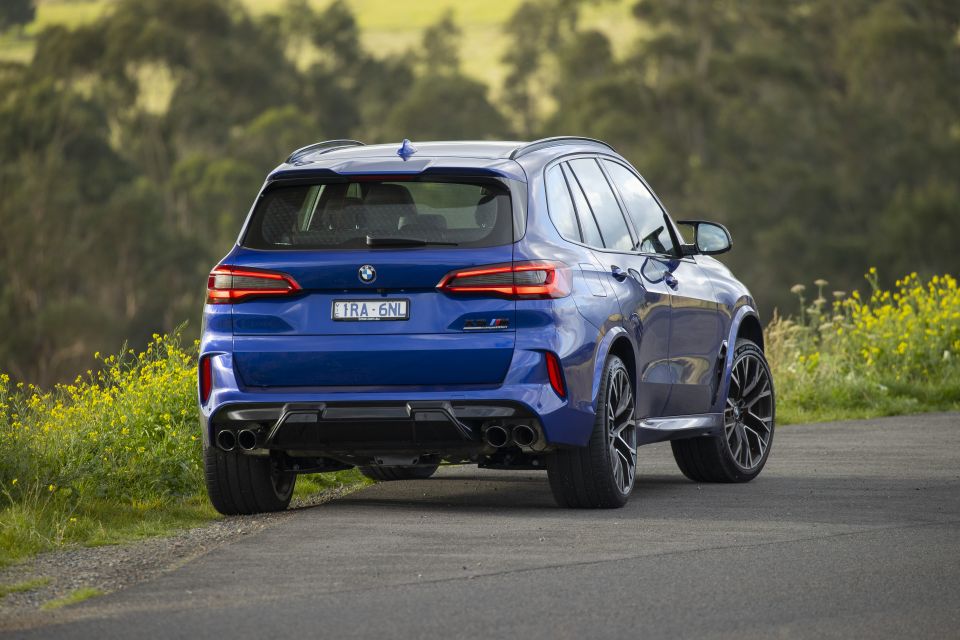

You need to be aware of its mass, regardless of drive mode, and get the front end turned before leaning too hard on the accelerator, but once they’re locked on line and balanced the M Competition twins are far more athletic than any SUV has the right to be.
It stops incredibly well for such a large crossover, too. We found it hard to differentiate between the two braking modes, but the pedal is always firm and reassuring underfoot, and the cars always stopped when required. Tick.
The four-wheel drive system is incredibly clever, and there’s a real sense each drive mode accomplishes something different. In its more mundane drive modes the car feels relatively neutral, but flicked into M Dynamic Mode with the stability control relaxed it becomes more aggressively rear biased.
Get on the gas hard in a corner and you can feel the xDrive system working, and commitment to the throttle (and a handful of brave pills) will bring the back end into play. It’s not a drift machine, of course, but even needing to dial in a dash of opposite lock under power in an SUV is impressive.
Halfway along one of the most engaging strips of roads on the launch I pulled over for a quick bathroom break, and realised I had a headache. Upon reflection, I realised it was because I was holding my breath to stay upright in the corners.
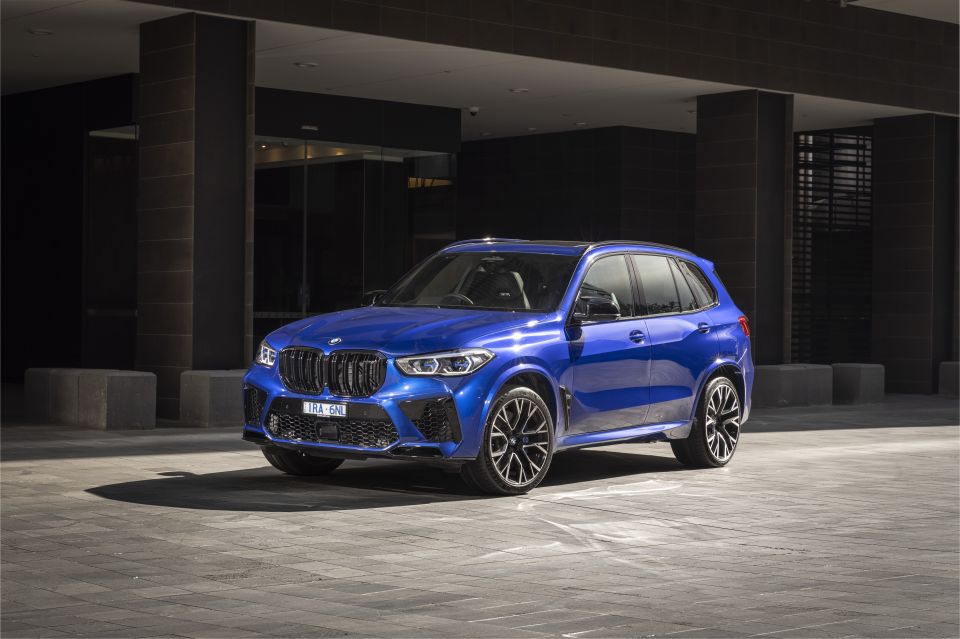

Body control in the stiffest suspension mode is iron-clad, but the ride remains surprisingly pliant. Ruts and bumps on tight, twisty roads don’t throw it off line, although it’s arguably still too tight to use day-to-day.
Although they’ll dance, the X5 M and X6 M would arguably be more comfortable on wide-open autobahns. With sweeping bends and no speed limits, they’re the place for such a fast, heavy beast.
One of the major costs associated with running the Competition twins is fuel. We averaged 13.7L/100km on the highway leg of the road loop, and saw more than 15L/100km after a hard blast.
Unlike the mainstream market, BMW only offers a three-year warranty on its cars. Given Mercedes-Benz and Volvo have both pushed to a five-year coverage term, it seems logical to assume BMW will eventually follow suit.
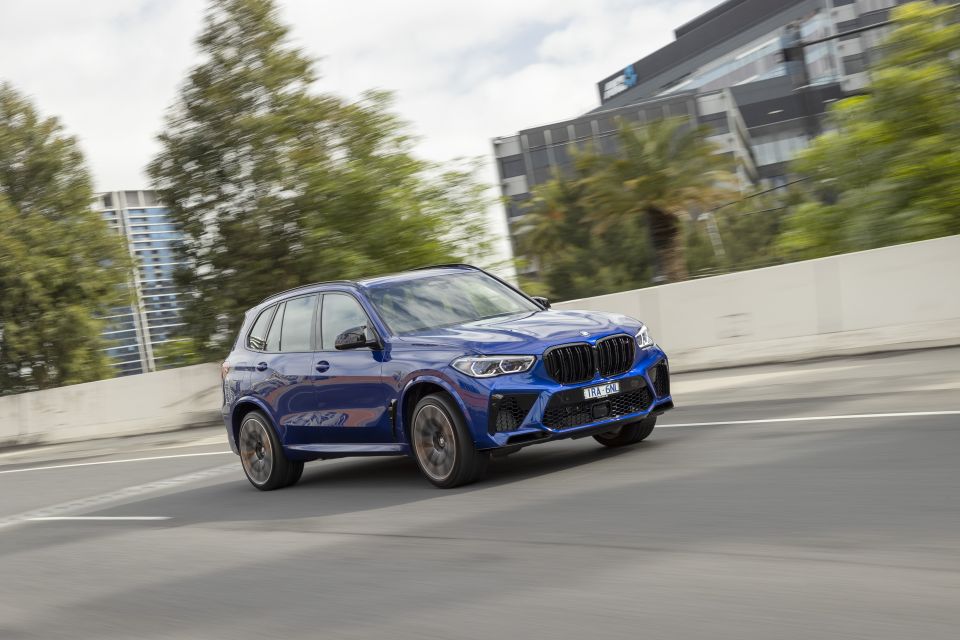
Where expert car reviews meet expert car buying – CarExpert gives you trusted advice, personalised service and real savings on your next new car.
The BMW X5 M and BMW X6 M Competition are crushingly capable. They’re stupid fast, handle far better than any large SUV has the right to, and handle the day-to-day grind with aplomb.
There’s nothing more you could really ask of a high-performance crossover.
You definitely don’t need one. The X5 M50i is significantly cheaper, offers impressive performance from its V8 engine, and doesn’t miss anything on the equipment front.
But these aren’t rational cars, and it won’t be sought out by buyers using their heads. They’re heart cars – and judged against that criterion, they tick most of the boxes.
We just wish they were a bit more theatrical at low speeds, and a bit noisier. We also wish we could have truly exploited the performance on the road in Australia.
An autobahn jaunt will have to wait for now.
Where expert car reviews meet expert car buying – CarExpert gives you trusted advice, personalised service and real savings on your next new car.
Scott Collie is an automotive journalist based in Melbourne, Australia. Scott studied journalism at RMIT University and, after a lifelong obsession with everything automotive, started covering the car industry shortly afterwards. He has a passion for travel, and is an avid Melbourne Demons supporter.


William Stopford
4 Hours Ago
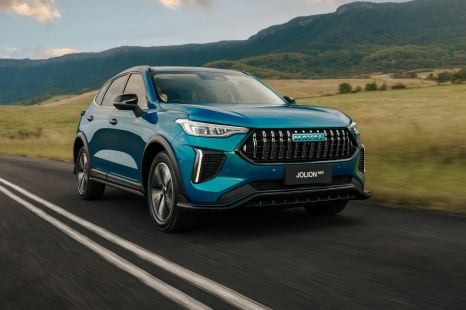

Max Davies
5 Hours Ago
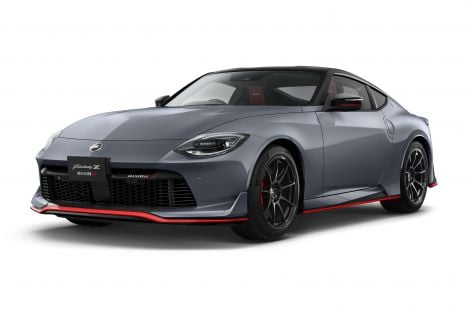

Derek Fung
6 Hours Ago
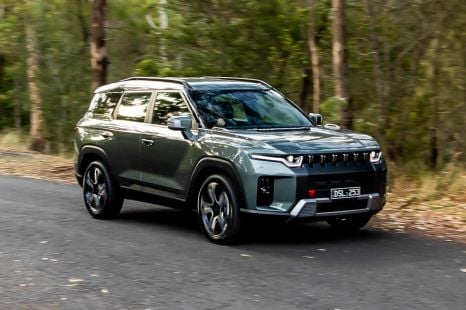

Matt Campbell
12 Hours Ago
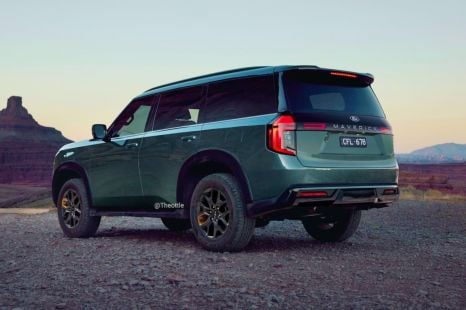

Ben Zachariah
1 Day Ago
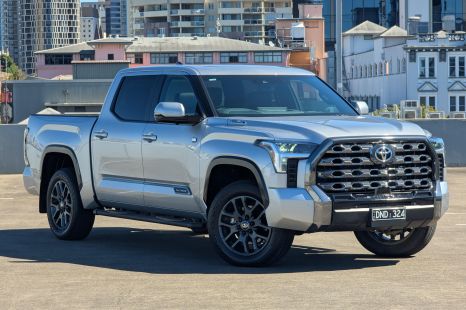

Damion Smy
1 Day Ago